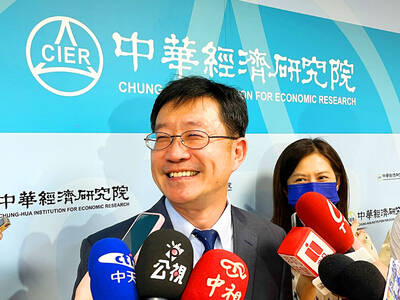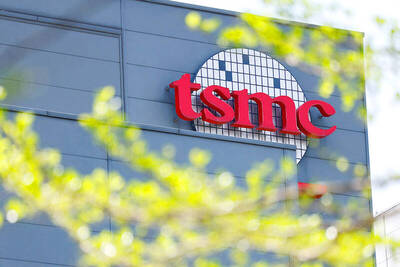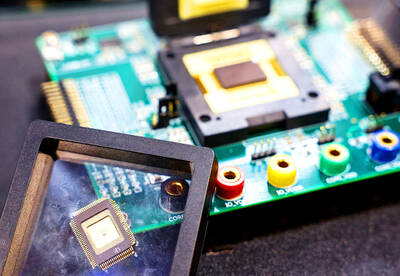The nation’s two largest liquid-crystal-display (LCD) panel makers AU Optronics Corp (友達光電) and Chi Mei Optoelectronics Corp (奇美電子) yesterday said they have inked memorandums of understanding (MOUs) with China’s major TV vendors led by TCL Corp as demand from US and European customers dwindles amid the economic downturn.
The cross-strait tie-ups may help Taiwanese LCD panel makers in expanding their customer lineups to China, one of the world’s fastest-growing flat-panel TV markets, and lower their risk in the volatile LCD industry as well, analysts said.
On the back of the news, AU Optronics and Chi Mei stock prices jumped 3.61 percent and 3 percent to NT$24.4 and NT$10.3, respectively, outperforming the benchmark TAIEX index, which inched up 0.76 percent yesterday.
In a company filing to the Taiwan Stock Exchange yesterday, AU Optronics said it would form a strategic partnership with China’s top TV vendors via the building of a TV supply chain. AU Optronics did not provide financial details about the MOU.
Chi Mei said in a different stock exchange filing that it signed cooperation agreements with nine Chinese TV manufacturers, including TCL.
“China is certainly an important market for Chi Mei and it is one of few markets with relatively stable growth,” Chi Mei spokesman Denis Chen (陳世賢) told the Taipei Times by telphone.
The companies’ remarks followed a statement by Taiwan Affairs Office Director Wang Yi (王毅) on Dec. 21 in Shanghai that China would buy US$2 billion in flat screen monitors from Taiwanese companies.
Two local business dailies reported yesterday that AU Optronics Chairman Lee Kun-yao (李焜耀) and Chi Mei Optoelectronics Chairman Frank Liao (廖錦祥) would sign the pacts with nine Chinese companies at an industry forum in China yesterday.
The two Chinese-language newspapers — the Commercial Times and the Economic Daily News — said the nine Chinese TV makers include TCL, Haier Group (海爾), Chang-hong Electric Co (長虹電器), Konka Group Co (康佳) and Skyworth Digital Holdings Ltd (創維數碼控股).
“The purchase deal will not provide an immediate boost to Taiwanese panel suppliers in terms of shipments and revenues. But it will bring a positive impact in the long run on the back of China’s sizable TV market,” Roger Yu (游智超), who tracks the LCD industry for Polaris Securities Co (寶來證券), said yesterday.
The US$2 billion orders for Taiwanese panel makers that Beijing has promised may not look enticing at first sight as orders are expected to come in over the next three to five years, Yu said.
But the market potential in China is attractive, Yu said. Orders from Chinese customers could prove vital as they may help local firms offset reduced demand from Japanese and South Korean customers, he said.
The latest development also represents a twist in the long-term efforts made by local firms to break into the supply chain of the world’s major TV makers.
Most major Japanese and South Korean TV makers such as Sony Corp and Samsung Electronics Co have shifted production to their own factories, or their panel joint ventures for panel purchases, while cutting orders from Taiwanese suppliers, Yu said.
“China provides an alternative market for Taiwanese flat panels,” Yu said.

WEAKER ACTIVITY: The sharpest deterioration was seen in the electronics and optical components sector, with the production index falling 13.2 points to 44.5 Taiwan’s manufacturing sector last month contracted for a second consecutive month, with the purchasing managers’ index (PMI) slipping to 48, reflecting ongoing caution over trade uncertainties, the Chung-Hua Institution for Economic Research (CIER, 中華經濟研究院) said yesterday. The decline reflects growing caution among companies amid uncertainty surrounding US tariffs, semiconductor duties and automotive import levies, and it is also likely linked to fading front-loading activity, CIER president Lien Hsien-ming (連賢明) said. “Some clients have started shifting orders to Southeast Asian countries where tariff regimes are already clear,” Lien told a news conference. Firms across the supply chain are also lowering stock levels to mitigate

Six Taiwanese companies, including contract chipmaker Taiwan Semiconductor Manufacturing Co (TSMC, 台積電), made the 2025 Fortune Global 500 list of the world’s largest firms by revenue. In a report published by New York-based Fortune magazine on Tuesday, Hon Hai Precision Industry Co (鴻海精密), also known as Foxconn Technology Group (富士康科技集團), ranked highest among Taiwanese firms, placing 28th with revenue of US$213.69 billion. Up 60 spots from last year, TSMC rose to No. 126 with US$90.16 billion in revenue, followed by Quanta Computer Inc (廣達) at 348th, Pegatron Corp (和碩) at 461st, CPC Corp, Taiwan (台灣中油) at 494th and Wistron Corp (緯創) at

NEGOTIATIONS: Semiconductors play an outsized role in Taiwan’s industrial and economic development and are a major driver of the Taiwan-US trade imbalance With US President Donald Trump threatening to impose tariffs on semiconductors, Taiwan is expected to face a significant challenge, as information and communications technology (ICT) products account for more than 70 percent of its exports to the US, Chung-Hua Institution for Economic Research (CIER, 中華經濟研究院) president Lien Hsien-ming (連賢明) said on Friday. Compared with other countries, semiconductors play a disproportionately large role in Taiwan’s industrial and economic development, Lien said. As the sixth-largest contributor to the US trade deficit, Taiwan recorded a US$73.9 billion trade surplus with the US last year — up from US$47.8 billion in 2023 — driven by strong

ASE Technology Holding Co (ASE, 日月光投控), the world’s biggest chip assembly and testing service provider, yesterday said it would boost equipment capital expenditure by up to 16 percent for this year to cope with strong customer demand for artificial intelligence (AI) applications. Aside from AI, a growing demand for semiconductors used in the automotive and industrial sectors is to drive ASE’s capacity next year, the Kaohsiung-based company said. “We do see the disparity between AI and other general sectors, and that pretty much aligns the scenario in the first half of this year,” ASE chief operating officer Tien Wu (吳田玉) told an